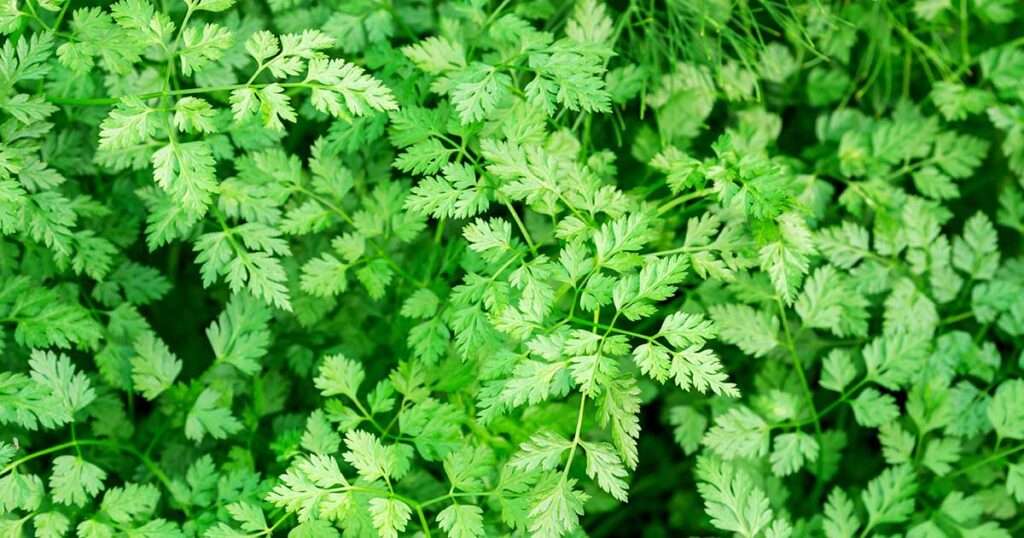
Description
The delicate culinary herb chervil is widely used in French cooking. It is a mild-flavored relative of the parsley family. This herb of spring is a common addition to egg recipes. It’s also known as French parsley.
Chervil leaves are curly and delicate, kind of like carrot greens. Compared to flat-leaf parsley, they are slightly darker and have frilly leaves. The leaves on some bunches are firmly closed. You may find bunches that contain blooms, but you should avoid those because the herb will have gone bitter.
Habitat
The Caucasus, a hilly area that lies between Turkey and Russia, is home to this plant. Although it can withstand a wide range of environments, it is typically found in moist locations along roadsides, in fields, and in pastures, much like other plants in the carrot/parsley family.
Uses
Throughout history, herbalists have utilized chervil for a variety of medical goals. In the past, chervil was used as an expectorant, digestive aid, diuretic, and skin refresher. It was also believed to alleviate pleurisy, gout, kidney stones, and eczema symptoms.

Varieties
Chervil, a relative of parsley, is typically divided into two varieties: ‘Vertissimo,’ which has glossy, flat leaves resembling Italian parsley, and ‘Crispum,’ which has more curly foliage and a milder flavor.
Plant Care
For chervil to flourish, regular watering, mulching, and insect control are necessary.
- Water
Chervil requires one inch of water every week, much as most other plants. Use water more sparingly when the weather is really warm.
- Mulch
A thin coating of straw or soft bark will control the soil’s moisture and temperature while preventing weed growth. Avoid burying the root-end of the stems when mulching, as trapping too much moisture leads to root rot.
- Control pests
Control pests Aphids and slugs like to feed on chervil. Pests can be avoided by growing companion plants close by and manually removing any slugs.
- Prune
Prune regularly and trim to keep chervil from bolting. Your chervil plant will become bushier and fuller as a result of this.
- Succession planting
You may always start fresh plants on a rotating basis to provide a consistent supply in case your chervil does bolt in spite of your best efforts. (This is a standard method for crops that are harvested only once, such as radishes and lettuce.)
- Fertilizer
Chervil grows quickly and requires little in the way of fertilizers, but it takes up a lot of potassium from the soil. A persistent fertilizer, such Plantura Tomato Food, keeps chervil from going without nutrients. It gives the plant a steady supply of potassium and nitrogen. Fertilizer at a rate of 40 g/m² is sufficient for weak growers. Soil organisms will break down the fertilizer evenly and release its nutrients gradually.
Table





